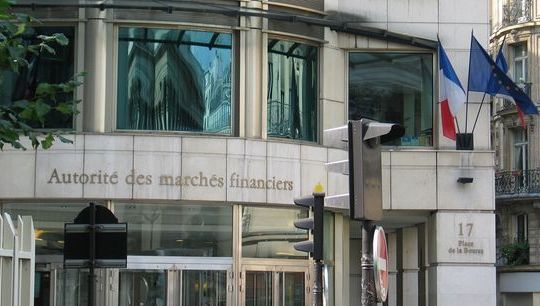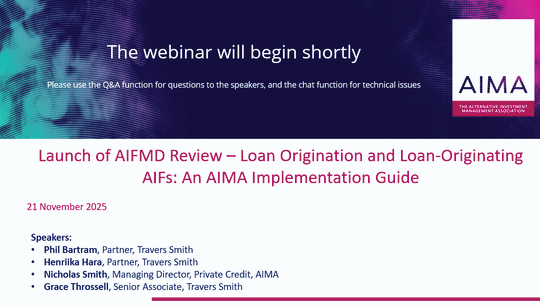Product development opportunities – the ICAV, the Loan QIAIF and the Loan ELTIF
By Aisling Costello, Senior Manager, Investment Management Advisory, and Brian Jackson, Partner, Audit Financial Services, Deloitte
Published: 31 March 2015
Ireland has recently expanded its fund range by launching both a new fund vehicle, the Irish Collective Asset-management Vehicle (ICAV), and a new fund product, the Loan QIAIF. European legislators have also been busy launching additional fund products, including the European Long Term Investment Fund.
In this article, we discuss the principal characteristics and benefits of the ICAV, before summarising and contrasting the key attributes of the Loan QIAIF and an ELTIF structured as a loan fund.
ICAV
As a vehicle designed specifically for the funds industry, the ICAV combines the advantages of each of the existing Irish fund vehicles to form a highly flexible funds solution. Its benefits for investors and promoters include its capacity for sub-funds to prepare separate financial statements; the ability to hold a single asset; and the possibility of increased distribution to US investors as it qualifies for their ‘check the box’ election. The ICAV will interact solely with the Central Bank of Ireland (CBI) rather than with the CBI and the Companies Registration Office (CRO), resulting in both stream-lined incorporation and simplified on-going compliance.
Existing Irish corporate funds will be able to convert to an ICAV through a simplified conversion process. Conversion allows a fund to maintain its past performance data by changing the seat of incorporation rather than starting anew, enabling funds to carry over their track record. Similarly, it will be possible for overseas investment companies to convert to an ICAV under a one-step re-domiciliation/migration process, rather than being required to migrate and then convert.
The new ICAV structure will run parallel to, rather than replace, existing fund structures. Managers and boards may opt to convert, but are not obliged to change from their existing structure. Therefore, before converting, we recommend that managers and boards conduct a cost-benefit analysis to determine whether the potential benefits in respect of reduced compliance costs and the increased distribution opportunities would justify any costs and effort involved in converting. These conversion costs include drafting the instrument of incorporation, completing the filings with the CBI, de-registering from the CRO and notifying shareholders. It is also important to consider any potential tax consequences at the investor level.
The ICAV was approved by the Irish Parliament in February and signed into law by the Irish President. The CBI earlier confirmed that it would be ready to accept ICAV applications within two weeks of the enactment of the ICAV legislation.
ELTIF v Loan QIAIF
ELTIF: Despite its origin as one of the reforms proposed for the UCITS regime, the final ELTIF is a stand-alone fund governed by the Alternative Investment Fund Managers Directive (AIFMD) with a wide range of permitted investment strategies. One of its permitted strategies is issuing loans, and in this article, we focus on an ELTIF structured purely as a loan fund.
Loan QIAIF: Ireland introduced the Qualifying Investor Alternative Investment Fund (QIAIF) some years ago as the new AIFMD compliant version of its previous Qualifying Investor Fund range. In October 2014, the CBI updated this structure by authorising it to originate loans – these new loan originating elements are the focus of the Loan QIAIF aspect of this article.
In the following text, we summarise and contrast the principal features of each of these new loan funds, including their permitted investments and investors, as well as their leverage, transparency and structuring requirements.
Portfolio – permitted loans and loan recipients
The defining feature of any fund is its investment strategy, particularly its permitted investments. Key to a loan fund is the type of loans it can hold in its portfolio and the characteristics of its permitted loan recipient. The ELTIF and the Loan QIAIF differ in both categories.
ELTIF: The ELTIF has significant flexibility regarding its portfolio - at least 70% of its capital must be invested in ‘eligible assets’, which include loans to ‘qualifying portfolio undertakings’ (QPUs) with the balance in certain diversified assets. QPUs are portfolio undertakings (excluding funds, financial undertakings, organised trading facilities, and listed entities) and listed small and medium enterprises with a market capitalisation of up to €500,000 (SMEs). It can also issue loans to European Social Entrepreneurship Funds (EuSEF), European Venture Capital Funds (EuVECA), and other ELTIFs. In general, the ELTIF can invest up to 10% of its capital in a single QPU.
Loan QIAIF: The CBI has confirmed that in addition to originating loans, the Loan QIAIF may participate in loans, acquire loans in the secondary market, and seek exposure to loans by way of sub-participations. It is also permitted to engage in operations resulting directly from those activities such as handling any collateral which is used as security for the loans, and to engage in treasury management and the use of derivatives for hedging purposes. It can invest up to 25% of net assets to a single issuer within a specific time-frame. The Loan QIAIF, unlike the ELTIF, can issue loans to businesses generally, but is prohibited from issuing loans to natural persons, financial businesses, and entities related to the fund such as the fund manager. When lending to small and medium businesses in Ireland, the Loan QIAIF must abide by the CBI’s ‘Code of Conduct for Business Lending to Small and Medium Enterprises’ – in addition to complying with the CBI’s AIF Rulebook which applies to all QIAIFs.
It seems the different range of permitted loan recipients reflect the subtle differences in drivers behind the loan funds. The Loan QIAIF was established as a pipeline of funds to businesses and so has a relatively wide base of potential loan recipients. The ELTIF on the other hand was conceived as a funding pipeline to drive the long term growth of social entrepreneurship and infrastructure throughout the European real economy.
Marketing - eligible investors
As AIFMD regulated entities, both funds can be passported across the EU using the AIFMD passport.
ELTIF: The ELTIF can be marketed to both retail and professional investors – this is an interesting development since under AIFMD only funds marketed to professional investors can generally be passported. The ELTIF’s minimum investment of €10,000 has attracted criticism that this relatively high threshold would remove the ELTIF from the reach of most retail investors. Perhaps the European Commission set this threshold to protect the lower end of the retail spectrum from the perceived higher level of inherent risk in a loan fund?
ELTIFs are also considered to be a ‘priority tool to accomplish the European Investment Plan launched in November 2014’ and are conceived as an investment vehicle through which the European Investment Banking (EIB) Group can invest its European infrastructure and SME financing. The European Commission was charged with prioritising and streamlining its processes for all applications by ELTIFs for EIB financing.
Where retail investors are anticipated, the ELTIF manager must undertake additional due diligence to ensure that the potential investor has sufficient expertise and resources to understand and bear an investment in a long term closed ended fund.
Loan QIAIF: The Loan QIAIF is widely available for investment by professional investors for a minimum initial investment of €100,000.
Leverage
ELTIF: Although the ELTIF can borrow up to 30% of its capital, this can only be used to purchase assets – it cannot be used to issue loans.
Loan QIAIF: The CBI capped the Loan QIAIF’s upper leverage limit so that gross assets must not exceed 200% of the fund’s net asset value.
Before launching the Loan QIAIF, the CBI issued a Consultation Paper seeking feedback on some of its proposed rules. In its Feedback Statement summarising the responses received to that Consultation Paper, the CBI reported that most respondents ‘fundamentally disagreed’ with the cap of 200%, saying that it was relatively low. Respondents highlighted that AIFMD does not impose such a limit, it merely requires funds to set to set their own limits and adhere to them.
Given the leverage restrictions in place for both the Loan QIAIF and the ELTIF, it is likely that unregulated loan funds will continue to be established where more highly geared structures are required.
Transparency
As AIFs subject to AIFMD, both funds are already subject to detailed levels of disclosure. The CBI acknowledges these high levels of transparency, yet reasons that the unique nature of a loan fund requires supplementary disclosures, both pre-investment and periodically at each net asset value calculation point. It considers that a loan fund should apply the same criteria as banks to distressed loans so that investors can have some assurances that appropriate categorisation is applied.
ELTIF: An ELTIF marketed to retail investors must publish a ‘Key Information Document’ (KID). The KID is a three page document which summarises in plain language the most important feature of the investment fund and what its risks are. This is a new requirement from the recently implemented European Regulation on key information documents for ‘Packaged Retail and Insurance-based Investment Products’. It introduces a new obligation for providers of certain investment products including investment funds to issue a pre-contractual information document to retail investors. Firms must comply with its requirements from 31 December 2016.
Loan QIAIF: Information to be disclosed to unitholders includes details of the fund’s loan book, while the Loan QIAIF must also submit a list of any undrawn committed credit lines to the CBI to allow it to monitor systemic risk.
Structure
The funds share similar structuring requirements – both must be authorised in their home member state, can form part of an umbrella fund, must be closed ended and must have an AIFMD authorised investment manager. The rationale for prohibiting open-ended structures is to avoid situations where a loss in investor confidence could lead to investor runs, which in turn could lead to loans being recalled or sold onwards in a forced environment. Both can also be structured using an ICAV as the underlying vehicle.
ELTIF: The ELTIF can be structured to allow redemptions if this fits with the fund’s investment strategy. Under exceptional circumstances specified within the rules of incorporation, the ELTIFs life-cycle can be extended or reduced to allow for more flexibility.
Loan QIAIF: Although Loan QIAIFs must be closed-ended, they are permitted at authorisation to specify interim redemption dates within the fund’s life-cycle. Distributions and redemptions are permitted if liquid assets are available and there is no risk of jeopardising the Loan QIAIF’s regulatory compliance or liquidity obligations. The rules allow the Loan QIAIF to make redemptions subject to investor approval, while distributions may be made throughout the Loan QIAIF’s life-cycle.
Market insights
The creation of the loan funds demonstrates the recognition by regulators that appropriately regulated investment products can help to drive the growth of the European economy.
It will be interesting to see the impact of loan funds on the European financing landscape and in particular whether the increased competition impacts the loan interest rates on offer from banks?
There has been significant interest in the Loan QIAIF since the CBI launched it in October 2014. However, to date, this has not actually resulted in a significant number of fund launches. Restrictions in relation to leverage as well as the diversity requirements have proved challenging to overcome and therefore it will be interesting to see if any of these rules are relaxed in future.
On the other hand, European regulators anticipate a large uptake by retail investors in the ELTIF, notwithstanding the minimum investment of €10,000, while Managers have expressed strong interest in the ELTIF’s eligibility for priority and streamlined funding from the EIB Group.
Finally, it will be interesting to see whether the introduction of loan funds can make a real impact in driving growth in the European economy.
www.deloitte.com/ie/investment-management







